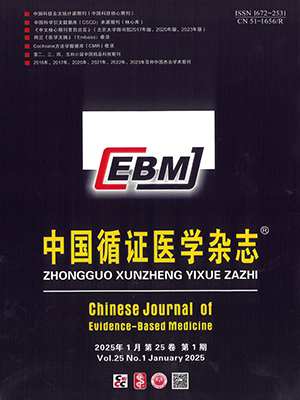| 1. |
Roddy E, Doherty M. Epidemiology of gout. Arthritis Res Ther, 2010, 12(6): 223.
|
| 2. |
Juraschek SP, Miller ER, Gelber AC. Body mass index, obesity, and prevalent gout in the United States in 1988-1994 and 2007-2010. Arthritis Care Res (Hoboken), 2013, 65(1): 127-132.
|
| 3. |
Kuo CF, Grainge MJ, Mallen C, et al. Rising burden of gout in the UK but continuing suboptimal management: a nationwide population study. Ann Rheum Dis, 2015, 74(4): 661-667.
|
| 4. |
Robinson PC, Taylor WJ, Merriman TR. Systematic review of the prevalence of gout and hyperuricaemia in Australia. Intern Med J, 2012, 42(9): 997-1007.
|
| 5. |
Winnard D, Wright C, Taylor WJ, et al. National prevalence of gout derived from administrative health data in Aotearoa New Zealand. Rheumatology (Oxford), 2012, 51(5): 901-909.
|
| 6. |
Richette P, Doherty M, Pascual E, et al. 2016 updated EULAR evidence-based recommendations for the management of gout. Ann Rheum Dis, 2017, 76(1): 29-42.
|
| 7. |
Khanna D, Fitzgerald JD, Khanna PP, et al. 2012 American College of Rheumatology guidelines for management of gout. Part 1: systematic nonpharmacologic and pharmacologic therapeutic approaches to hyperuricemia. Arthritis Care Res (Hoboken), 2012, 64(10): 1431-1446.
|
| 8. |
刘雅莉, 袁金秋, 杨克虎, 等. 系统评价再评价的制作方法简介及相关资料分析. 中国循证儿科杂志, 2011, 6(1): 58-64.
|
| 9. |
杨克虎, 刘雅莉, 袁金秋, 等. 发展和完善中的系统评价再评价. 中国循证儿科杂志, 2011, 6(1): 54-57.
|
| 10. |
Shea BJ, Grimshaw JM, Wells GA, et al. Development of AMSTAR: a measurement tool to assess the methodological quality of systematic reviews. BMC Med Res Methodol, 2007, 7: 10.
|
| 11. |
Schünemann HJ, Oxman AD, Brozek J, et al. Grading quality of evidence and strength of recommendations for diagnostic tests and strategies. BMJ, 2008, 336(7653): 1106-1110.
|
| 12. |
陈耀龙, 姚亮, 杜亮, 等. GRADE 在系统评价中应用的必要性及注意事项. 中国循证医学杂志, 2013, 13(12): 1401-1404.
|
| 13. |
张琰. 非布索坦治疗痛风疗效及安全性的 Meta 分析. 华西医学, 2009, 24(10): 2599-2602.
|
| 14. |
党超志. 非布索坦治疗痛风的系统评价. 南宁: 广西医科大学, 2010.
|
| 15. |
邵莉, 魏丽. 苯溴马隆与别嘌呤醇治疗原发性痛风高尿酸血症疗效与安全性比较的 Meta 分析. 中国循证医学杂志, 2012, 12(6): 722-726.
|
| 16. |
Tayar JH, Lopez-Olivo MA, Suarez-Almazor ME. Febuxostat for treating chronic gout. Cochrane Database Syst Rev, 2012, 11-CD008653.
|
| 17. |
Faruque LI, Ehteshami-Afshar A, Wiebe N, et al. A systematic review and meta-analysis on the safety and efficacy of febuxostat versus allopurinol in chronic gout. Semin Arthritis Rheum, 2013, 43(3): 367-375.
|
| 18. |
Seth R, Kydd AS, Buchbinder R, et al. Allopurinol for chronic gout. Cochrane Database Syst Rev, 2014, (10): CD006077.
|
| 19. |
Villazor-Isidro EBS, Brojan JCG, Pega-Flores CJR, et al. Urate lowering efficacy of febuxostat versus allopurinol in hyperuricemic patients with gout. Phillippine J Intern Med, 2014, 52: 1.
|
| 20. |
Castrejon I, Toledano E, Rosario MP, et al. Erratum to: Safety of allopurinol compared with other urate-lowering drugs in patients with gout: a systematic review and meta-analysis. Rheumatol Int, 2015, 35(7): 1139.
|
| 21. |
杨婷, 路敏, 周颖, 等. 非布司他和别嘌醇治疗痛风有效性和安全性的 Meta 分析. 中国临床药理学杂志, 2015, 31(2): 122-126.
|
| 22. |
Borghi C, Perez-Ruiz F. Urate lowering therapies in the treatment of gout: a systematic review and meta-analysis. Eur Rev Med Pharmacol Sci, 2016, 20(5): 983-992.
|
| 23. |
方芳, 王鹏. 非布司他与别嘌呤醇治疗痛风随机对照试验系统评价. 中国药业, 2016, 25(11): 13-18, 19.
|
| 24. |
Seo HJ, Kim KU. Quality assessment of systematic reviews or meta-analyses of nursing interventions conducted by Korean reviewers. BMC Med Res Methodol, 2012, 12: 129.
|
| 25. |
White WB, Saag KG, Becker MA, et al. Cardiovascular safety of febuxostat or allopurinol in patients with gout. N Engl J Med, 2018, 378(13): 1200-1210.
|
| 26. |
Moher D, Tetzlaff J, Tricco AC, et al. Epidemiology and reporting characteristics of systematic reviews. PLoS Med, 2007, 4(3): e78.
|
| 27. |
李静, 李幼平. 不断完善与发展的 Cochrane 系统评价. 中国循证医学杂志, 2008, 8(9): 742-743.
|
| 28. |
屈云, 何俐, 刘鸣. Cochrane 系统评价的基本方法. 中国临床康复, 2003, 7(4): 532-533, 536.
|
| 29. |
中华医学会风湿病学分会. 2016 中国痛风诊疗指南. 中华内科杂志, 2016, 55(11): 892-899.
|
| 30. |
Khanna D, Khanna PP, Fitzgerald JD, et al. 2012 American College of Rheumatology guidelines for management of gout. Part 2: therapy and antiinflammatory prophylaxis of acute gouty arthritis. Arthritis Care Res (Hoboken), 2012, 64(10): 1447-1461.
|




